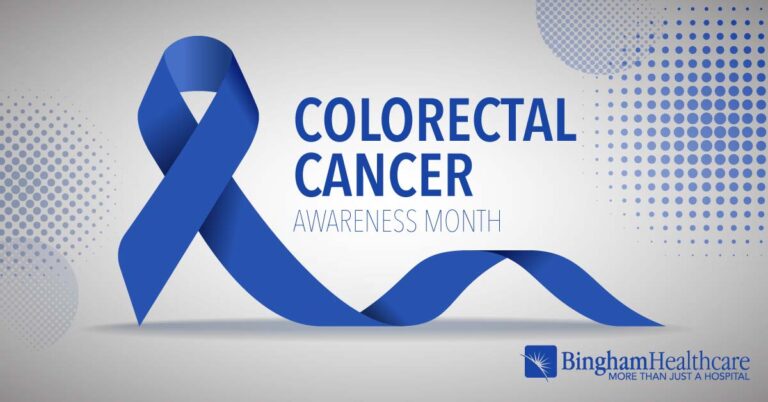
The Prostate Predicament
How one man got to the cause of his urinary symptoms
If you’ve ever had to persuade your husband to visit the doctor, you’re not alone. Men love to exhibit denial, machismo, and stoicism about their health. Thankfully, the women in their lives have influence there. But how and when should you push the man in your life to seek routine care? Read on to find out.
For some time, Nick had trouble…going. Gulping fluids by the gallon didn’t help. Neither did thinking of waterfalls or rushing rapids. And then, the proverbial floodgates opened, and he had trouble with going too much. The bathroom became his dearest friend and, at the same time, a hated enemy. Soon, lower abdominal pain kicked in, and then there was blood.
It was time for Nick to see the urologist.
“Initially you can start to develop urinary difficulty, urinary frequency, urgency, not emptying your bladder well, and getting up at night several times to go to the bathroom several times,” says David M. Sisul, MD, urologist at Bingham Memorial Urology in Idaho Falls. “Those are very common symptoms indicative of a prostate condition.”
“When men age, their prostate gland often grows in size, and, as it grows outward, it also compresses and obstructs the urethra, making it harder for the bladder to push the urine through and empty fully,” says Dr. Sisul.
Well, Nick was getting older, so it was off to see a specialist. One quick consultation later and his doctor thought he’d narrowed down the diagnosis to an enlarged prostate. But first he had to rule out other things.
THE ‘OTHER THINGS’
“Urologists usually conduct a bevy of tests to ensure something else isn’t causing the symptoms,” Dr. Sisul says. For example, urgency and frequency could be signs of a urinary tract infection. In that case, the urologist would conduct a urinalysis, which would also determine if the urine contained blood. Blood in urine could mean a bladder stone or bladder cancer. It also could indicate a condition called prostatitis.
According to Dr. Sisul, prostatitis is a catchall term for inflammation or infection of the prostate gland. There are two types: acute and chronic. Acute prostatitis is less common and more severe. It is marked by a urinary tract infection, abdominal or genital pain, increased urinary urgency, need to urinate at night, a burning sensation during urination, nausea, fever, chills and vomiting. If left untreated, it can lead to a kidney infection, prostate abscess, or complete inability to urinate.
Chronic prostatitis involves similar symptoms but with much less severity, and the symptoms tend to fluctuate. Patients may feel better for a time, even months, but then the symptoms return.
TESTS TO GET
Among the tests to determine if a man has prostatitis, a urologist may conduct a uroflow exam, which measures urine flow. This test involves a specially designed toilet that electronically monitors force and flow.
Of course, a digital rectal exam (commonly called a prostate exam) would be conducted to determine if the prostate is enlarged or feels out of the ordinary.
Then there’s cystoscopy. After Nick’s urinalysis and prostate exam, his urologist wanted to see the extent of the prostate’s pressure against his urethra—the passageway from the bladder where urine flows out of the body—and chronicle whether the bladder or any of his internal plumbing was damaged. During a cystoscopy, the urologist inserts a thin, flexible scope into the urethra and navigates it along the passageway to the bladder, peering inside the scope. All in all the test is minimally invasive, but it can be uncomfortable.
DIAGNOSIS CONFIRMED
After the appointment with his urologist, Nick received his prognosis: chronic prostatitis. Luckily, a round of antibiotics and a change in lifestyle, which included eliminating caffeine and certain foods like spicy dishes, became the course of action. In some cases, prostate patients are placed on lifelong medications to reduce the size of the prostate and keep it in check, but this was not the case in Nick’s situation.
For others, minimally invasive surgery may be required to reduce the size of the enlarged prostate. For example, there’s GreenLight laser therapy, which Dr. Sisul offers. “A small laser fiber is put into the urethra with the aid of a scope,” Dr. Sisul says. “You can see the prostate tissue that’s causing the blockage, and that tissue can be ablated. This may be ideal for men who don’t want to be on medication for life, can’t tolerate the medication, or who fail the medication.”
WHAT YOU CAN DO
A large number of men will deal with prostate enlargement in their lifetime. Talk to your doctor about medications and yearly screenings.
David M. Sisul, MD Sees Patients in Idaho Falls
Dr. Sisul is a highly trained urologist at Bingham Memorial Urology. His focus is in using the latest in minimally invasive technology, most notably the da Vinci robotic system and GreenLight laser therapy, for urologic disease management. His main interests lie in prostate cancer, enlarged prostates, and male sexual dysfunction (impotence). Additionally, he manages disorders of the full urologic spectrum, including bladder and kidney cancer, kidney stones, incontinence, urinary tract infections, and voiding dysfunction.
If you or a loved one has any questions, Dr. Sisul sees patients in Idaho Falls & Blackfoot. Schedule a consultation with Dr. Sisul by calling (208) 535-3626.
Return to Articles


